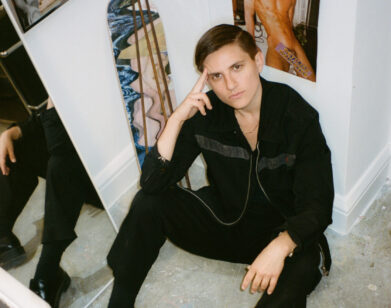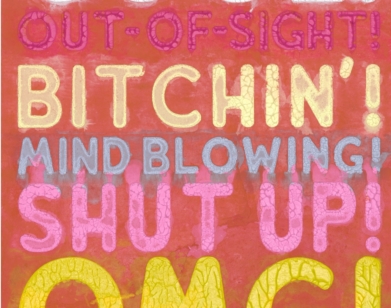art
“It Happens”: Breaking Glass With Judy Chicago
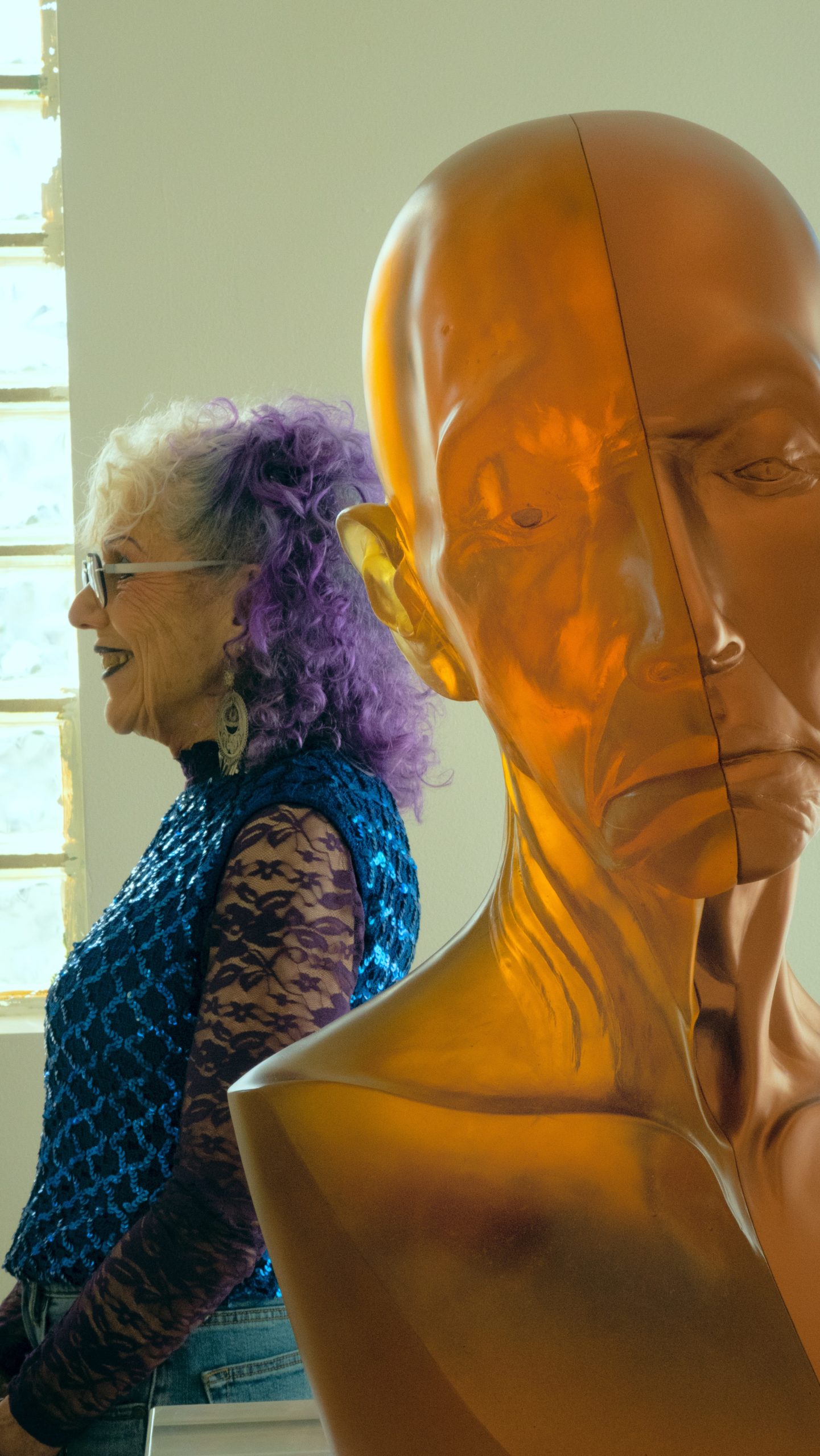
Judy Chicago. Photo by Donald Woodman.
Judy Chicago is so inextricably linked to The Dinner Party—the iconic, yonic, banquet-style installation she first staged in 1979—that it’s tempting to see everything that the 82-year-old artist has done since as chapters of the same story. Indeed, the sculptures in Judy Chicago in Glass, the artist’s latest series of large glass heads and hands on view at Miami’s Nina Johnson Gallery, could be the long-lost limbs of The Dinner Party’s phantom guests. But where The Dinner’s ceramic place settings represented a number history-altering women, Chicago’s latest exhibition focuses on more sweeping themes that have intrigued the artist over nearly seven decades of practice.
Chicago has periodically borrowed materials and techniques from the realm of craft, repurposing them for fine art contexts. In The Dinner Party, textiles and ceramic place settings—materials formerly relegated to the domestic arts—take center stage in Chicago’s articulation of feminist ideologies, and the pieces in Judy Chicago in Glass are no exception. Chicago’s manipulation of glass, highlighted in this exhibition through works produced from 2004-2013, features larger-than-life limbs painstakingly embellished with surrealist symbols (think flames and teardrops). For Chicago, glass is rife with paradox—delicate and rigid, opaque and transparent—as such, it can be manipulated to articulate the simultaneous power and vulnerability of humanity nature.
Chicago joined us via FaceTime from the Nina Johnson Gallery to discuss her new exhibition, mastering glass on her own terms, and grappling with the medium’s unforgiving character. Recently, she celebrated the completion of her largest glasswork to date—Mortality in Glass (2021)—only to have it shattered en route to the gallery. “Glass breaks,” says Chicago with a shrug, “It’s just part of the process.”
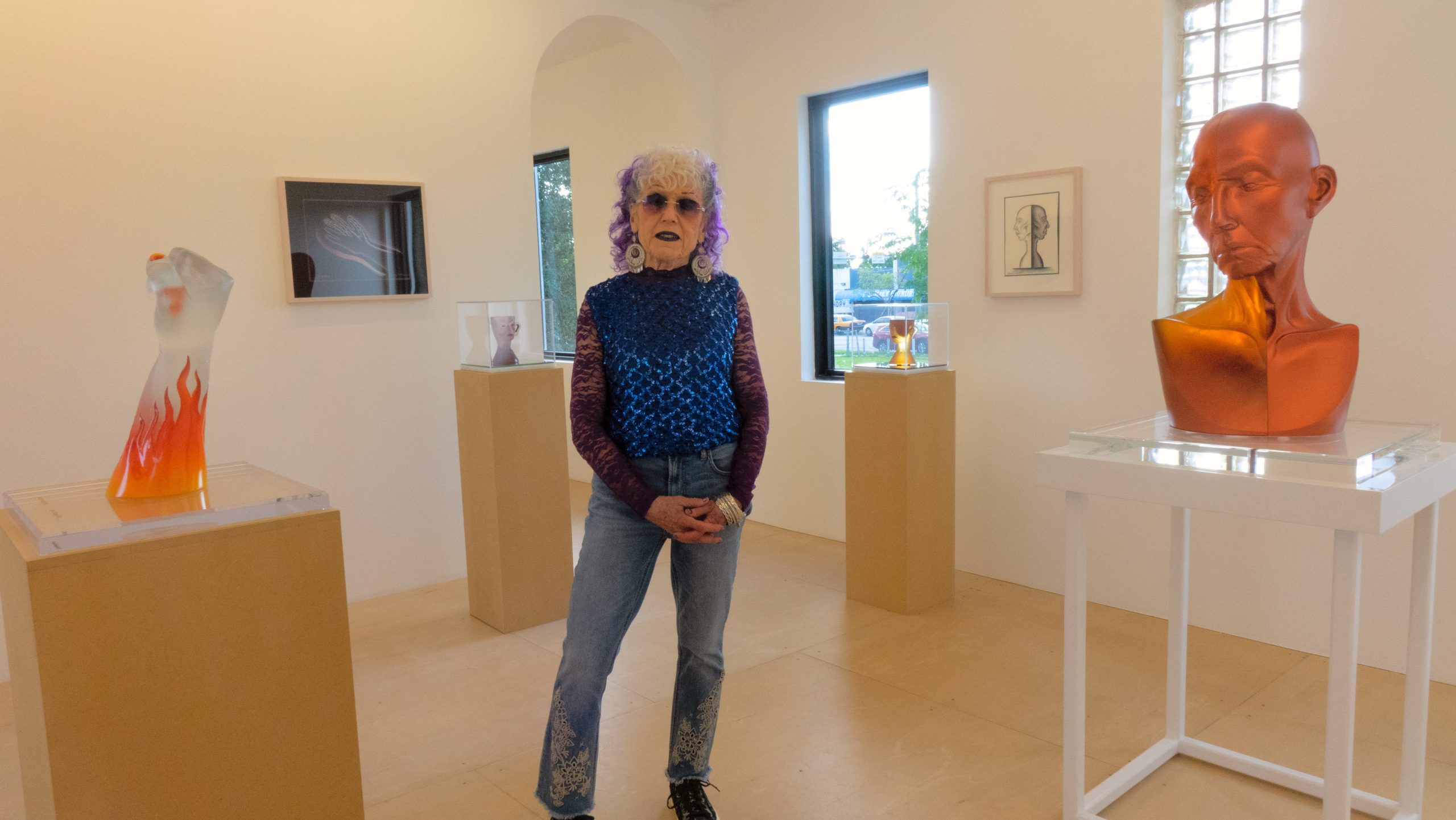
Judy Chicago. Photo by Donald Woodman.
———
RACHEL SMALL: What’s the background of the glass works in your latest solo show?
JUDY CHICAGO: There are actually several series represented. I was in Southern California in the ’60s and ’70s, when Peter Voulkos and John Mason brought ceramics over from the craft and decorative tradition into high art. The Holocaust Project [1985-1993] was the first time I had ever worked in glass and started thinking about glass. It occupied the same role as ceramics had before. Now, of course, nobody bats an eye at glass in a high art context. Jeffrey Deitch just opened a show called “Clay Pop,” and the work is a hell of a lot funkier than my ceramics ever were. So, that taboo was long ago challenged. Since I’ve brought so many techniques over—China painting, needle work—into high art, I got interested in doing the same thing with glass.
SMALL: How did you go about that?
CHICAGO: In 2003, I got a residency at the glass school outside of Seattle that Chihuly started. I went with a question: “Would it be possible to paint and kiln fire cast glass and etch glass?” It took me a year-and-a-half of experimenting to figure out how to do this. In the meantime, I started the series about hands. If you think about what makes us human, it is our hands—the gestures we make, the words we make, the music we write, the art we make. This was around the beginning of this era of incredible polarization and focus on who you are, and who is allowed to write about whose experiences, and blah, blah, blah. I was interested in looking at what crosses identity, gender, ethnicity, race, religion: What is it that makes us human? Can we, as human beings, reach out our hands to each other and change the world we’ve made before we destroy it?
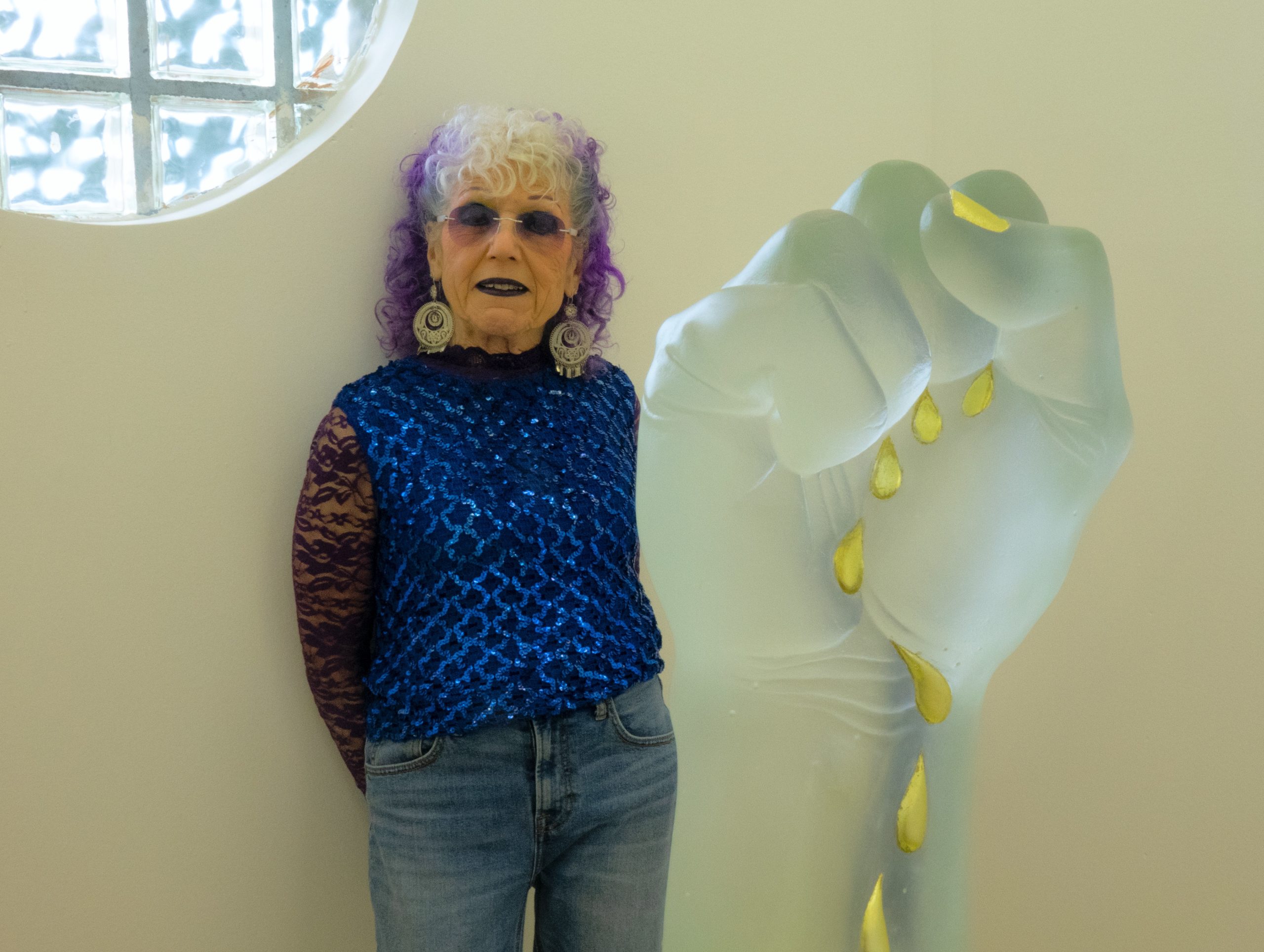
Judy Chicago with Weeping Fist, 2008. Photo by Donald Woodman.
SMALL: So, this is Flaming Fist [2008].
CHICAGO: This is two feet high. Here’s a gesture that would normally be a gesture of power. It has all these associations with Black Power, also native power, brutal power. But you can see right through the glass. So now we’re talking about the vulnerability and fragility of that kind of power. To get a piece like this out of a kiln, it had to be annealed for two months.
SMALL: What did that entail?
CHICAGO: Glass is poured molten. Then it’s hardened in the mold in a kiln. That process is called annealing—going from liquid to solid. Then it was etched with these flames. Then I sprayed the flames with the kind of paint I was talking about, and put it back in the kiln, and the color took a week-and-a-half. Basically, we had to take the fist all the way through the stages of annealing, so it wouldn’t crack, in order to get the color to fuse with the surface. Fusing color and surface is a hallmark of my work, dating back to my very early pieces. Here, the color appears to be inside the fist, burning from the inside. There are a lot of visual references here to the fragility of power, the danger of power, the fact that power can be used positively or negatively. So, as I often say about my work: The simplicity belies the complexity, both of process and of meaning.
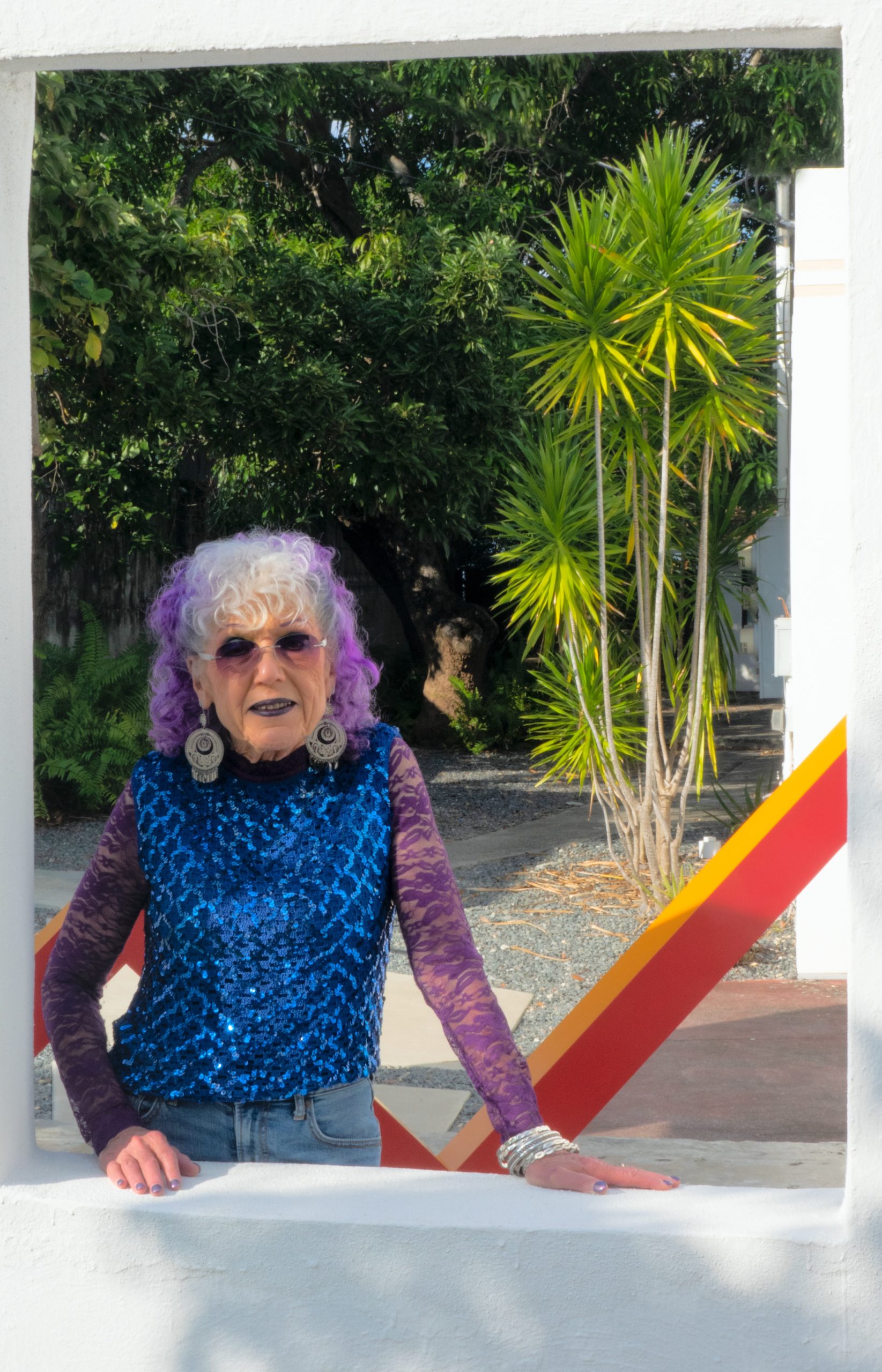
SMALL: When did you start the series of glass heads?
CHICAGO: I started the head series in 2007. Originally I cast seven heads, but I got fascinated by one head, of this woman named Toby. I did a whole series called Toby Heads. When I first met Toby, she was quite ill with cancer. She survived. I was about to cast her head, and she took off her wig. I didn’t even know she had a wig on. Shorn of hair, she looked genderless. So, what is at the core of being human? I started bringing in other techniques that I used before, like bronze. [Grand Toby Head with Copper Eye (2010)] is half bronze and half glass. Bronze and glass shrink in the kiln at completely different rates, which have to be calculated if you want to get a bronze and a glass half to fit to the other half. My point is that Grand Toby Head with Copper Eye is a technical tour de force. The combination of glass and bronze was combining fragility and strength, transparency and opacity, all the attributes that make an individual. Glass has allowed me to explore a whole range of questions about what it means to be human.
SMALL: How did you meet Toby?
CHICAGO: She and her then-husband bought some work from me. She visited us when I was in the middle of casting heads. I said, “Can I cast your head?” It was one of those serendipitous things. This one is called Face Lift [2013], which I think in Miami is particularly appropriate.
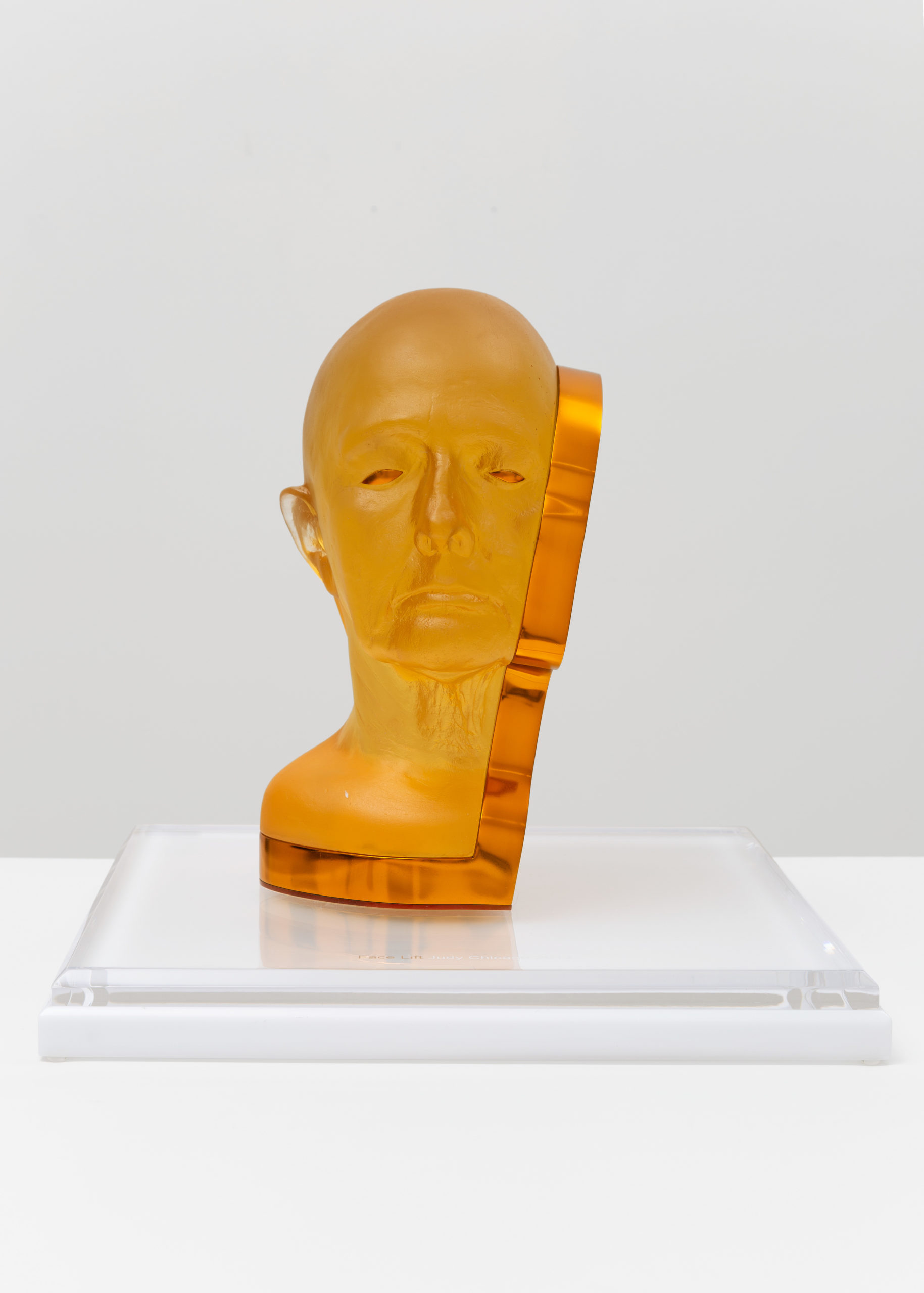
Facelift, 2013. Cast glass, lacquered bronze and mirror on acrylic base.
SMALL: I was going to ask… [Both laugh]
CHICAGO: Since I’m old, was seduced by the idea of maybe getting a facelift. My husband was like, “No, I’ll divorce you.” Then I read that having a facelift was like hitting the windshield of your car going at 70 miles an hour. So then I thought it would be really fun to play around with the whole idea of facelifts. Like your face, it’s falling, right?
SMALL: Yeah. [Both laugh]
CHICAGO: It’s fun. There’s a lot of humor in my work that people often don’t notice. It’s one of my favorite pieces actually.
SMALL: I love it. I feel like there’s almost a sci-fi undercurrent in the transparency of the anatomy.
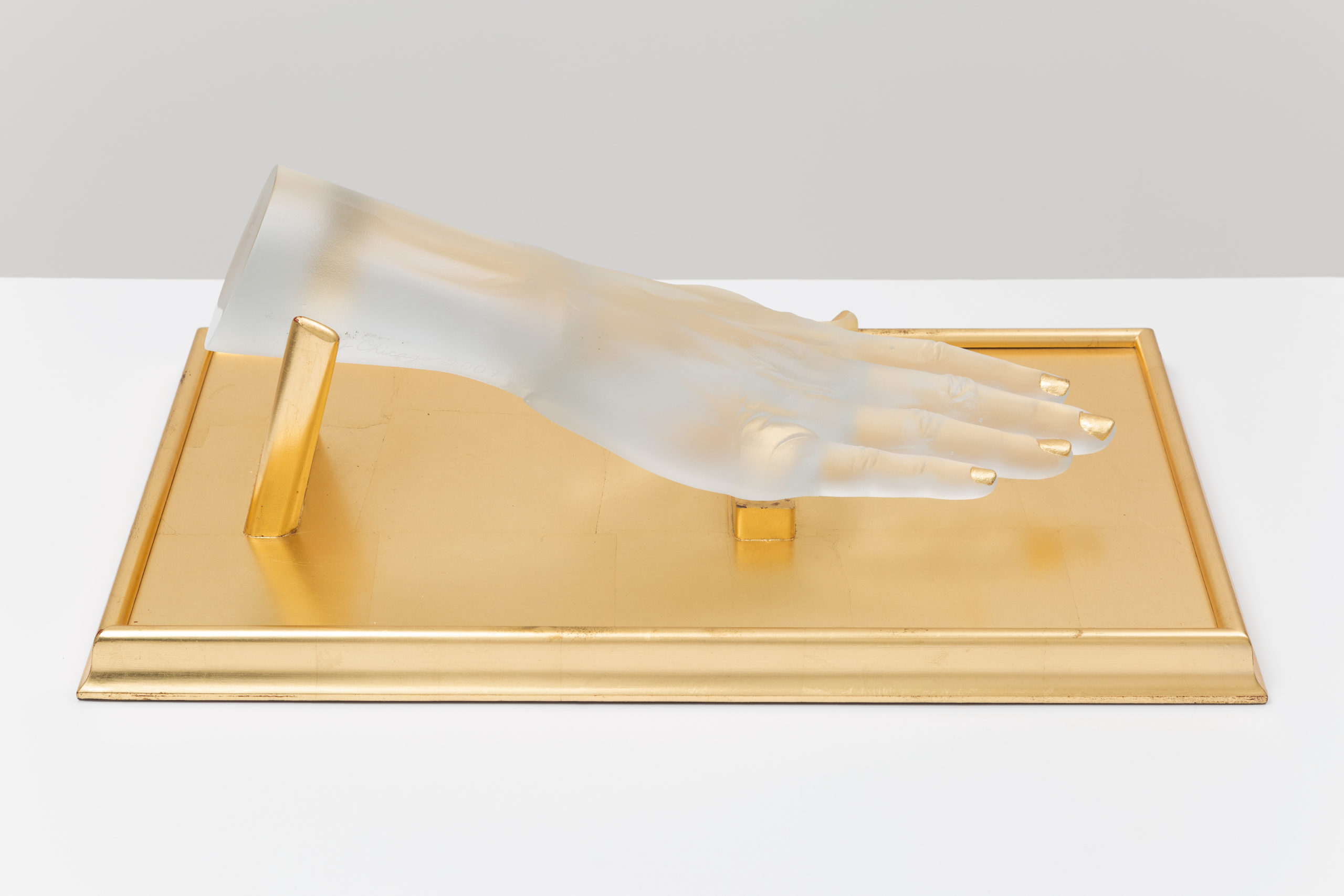
Extended Hand with Golden Fingernails, 2008. Goldleaf on cast glass.
CHICAGO: If you look inside, you see musculature and structure, but of course the gesture with those polished nails, you know, is hiding all suggestions of animality and physiology.
SMALL: What’s the thought behind painting the nails? That being something that’s traditionally thought of as a feminine beauty gesture—but, here, it’s like a genderless fusion of color and surface.
CHICAGO: You’ll have to look at my husband’s fingernails, first of all. [Chicago’s husband, Donald Woodman, holds up his hands for the camera, displaying painted fingernails] Donald and I have been married for 36 years, or will be on New Year’s Eve. His fingernails were painted at our wedding. The idea of painted fingernails being singularly female is something that Donald challenged an awful long time ago. Have you ever met somebody who smiles a lot, but you feel like, really, they want to cry every moment?
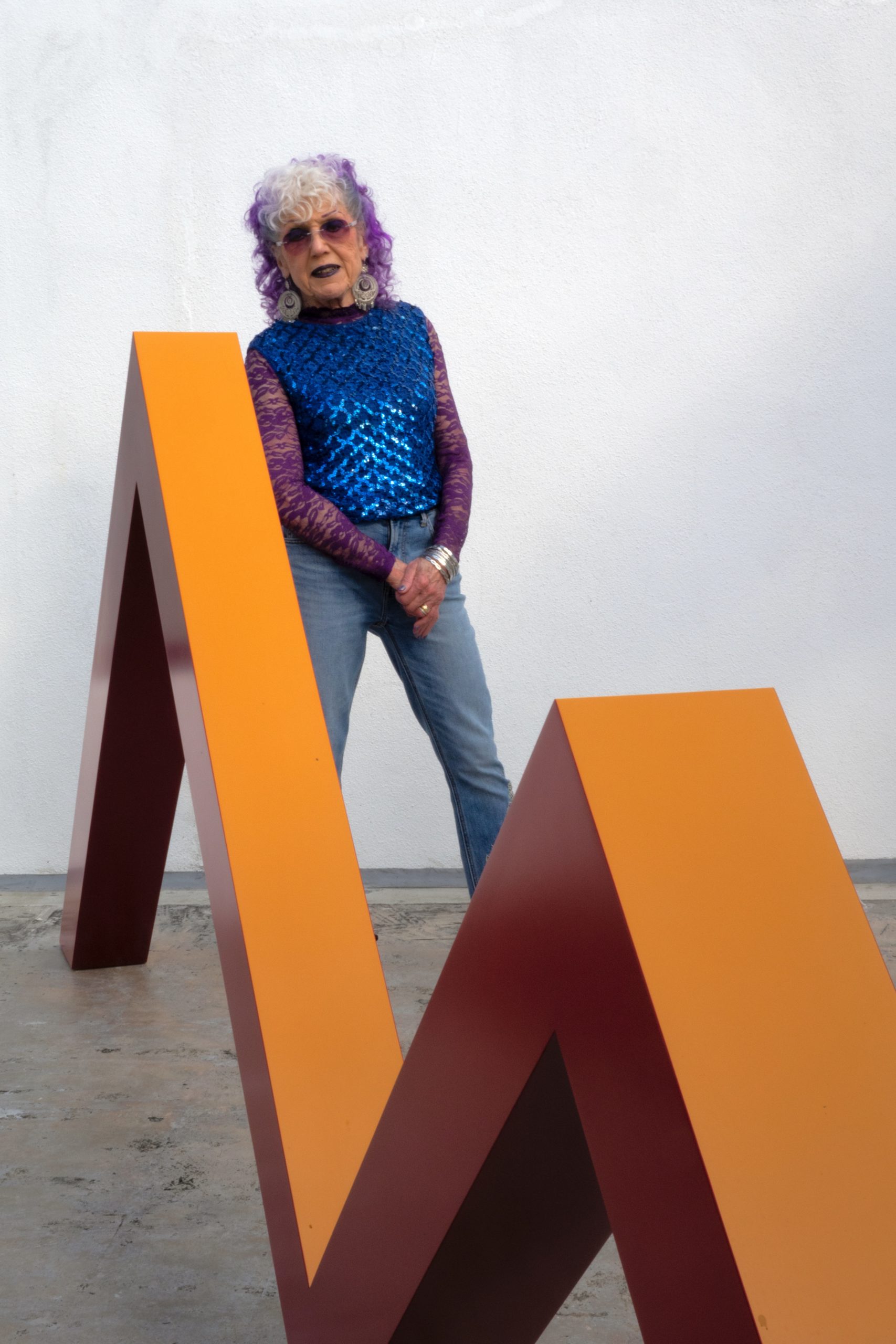
Judy Chicago with Zig Zag, 1965/2021. Photo by Donald Woodman.
SMALL: Definitely.
CHICAGO: I feel like there are a lot of men like that, since men are prohibited from crying.
SMALL: There’s also Mortality in Glass, which is the biggest glass piece you’ve made to date?
CHICAGO: It broke!
SMALL: No! I’m so sorry.
CHICAGO: Not as sorry as we were when we heard it! I have no idea what happened. It looks like they dropped the crate at customs or something. I mean, working in glass, there are a lot of breaks. It’s just part of the process. It happens.
SMALL: Well, it’s a poetic end for a piece named Mortality in Glass.
CHICAGO: Now I’ll call it “Shattered Mortality.”

